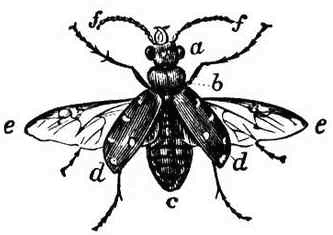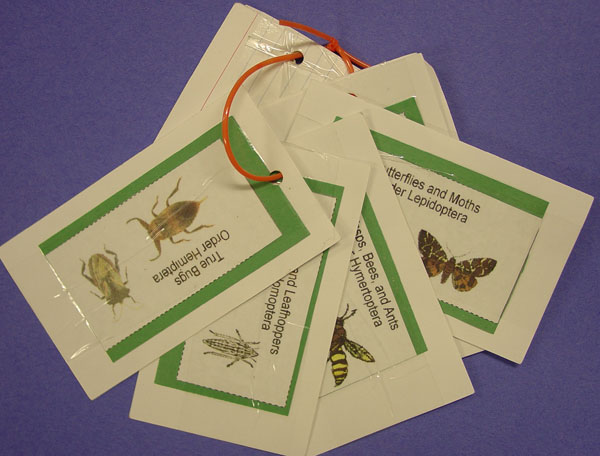|
|
Third Grade Integrated NGSS |
||
OBJECTIVE:
insect book pdf
·
Scissors · glue · index cards ARTHROPODS (ppt) BACKGROUND:
Arthropods
are bilaterally symmetrical and have jointed body segments with a pair of
appendages attached to each body segment. The body is covered with a
cuticle (thickened substance) which comes off ("molts") when the arthropod
gets larger. There is no internal skeleton. Their circulatory system is
very simple and they reproduce by laying eggs. Many insects go
through metamorphosis or physical changes. So a butterfly is
the adult insect but the caterpillar is one of the early stages and looks
more like a "worm" than an insect. Many arthropods like mosquitoes
spend most of their life in an aquatic form before it metamorphoses into a
flying insect.
Identification of arthropods is not easy, because there are so many
"creepy crawlies" out there. Below is information that may help you
group arthropods for your students. You may want to use other books or
information on the internet to help identify the different arthropods.
Spiders, scorpions, ticks, and horseshoe crabs belong to a group called
the chelicerates. They have no antennae and the first pair of
appendages are pincher-like.
PROCEDURE:
1.
Use the Insect Anatomy Worksheet and have the students color the correct
area. Talk about a legend and
how to use color to make the parts distinct.
For example, color the word “head” red and then color the head
portion of the grasshopper red.
2.
Insects are some of the most successful land organisms. Insects bite
humans, irritate skin, and sometimes cause disease. The insect body is
composed of a head, thorax, and on abdomen with 6 legs. The head has a
pair of compound eyes.
3.
Have students cut out the cards and
QUESTION:
How does the arthropod and other little critter population change
through time?
BACKGROUND:
PRIOR RESEARCH:
Do arthropods always look the same?
Which ones go through complete metamorphoses, and how do they look?
Maybe students can do a report on the bugs they predict they will
see.
EXPERIMENTAL DESIGN:
Assign plants to team of students.
Each class should have someone do the same plant, maybe at
different times of the week.
Best time would be spring time over a set amount of time.
Record temperature, moisture, wind in booklet. Lab booklet needs to
include major type of organisms (that they will start in one of the docent
labs) and record what they see.
Project should collect data in Oct through March, taking into
account that during the rainy season you may not find any insects.
|
|||



